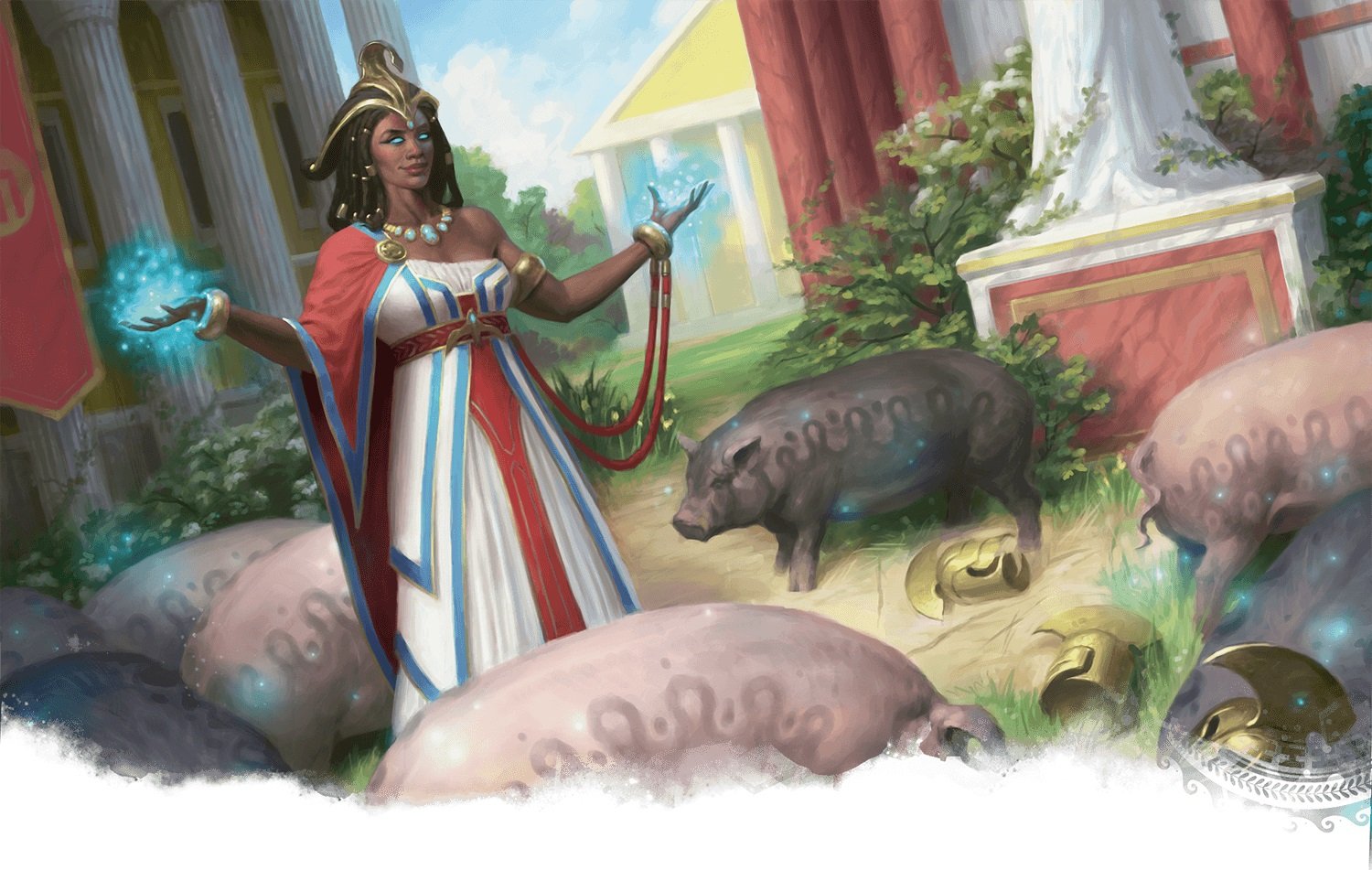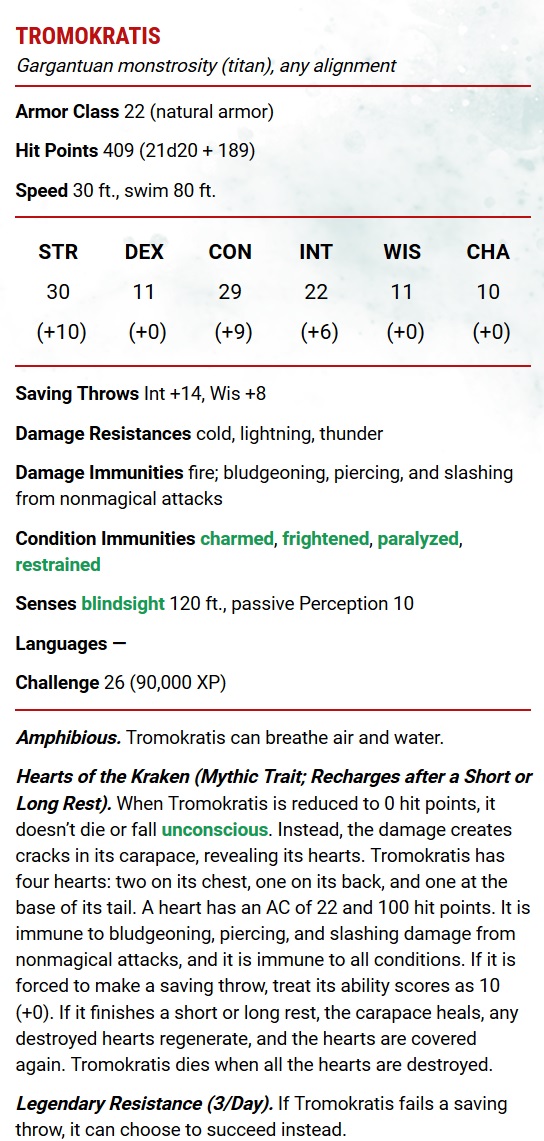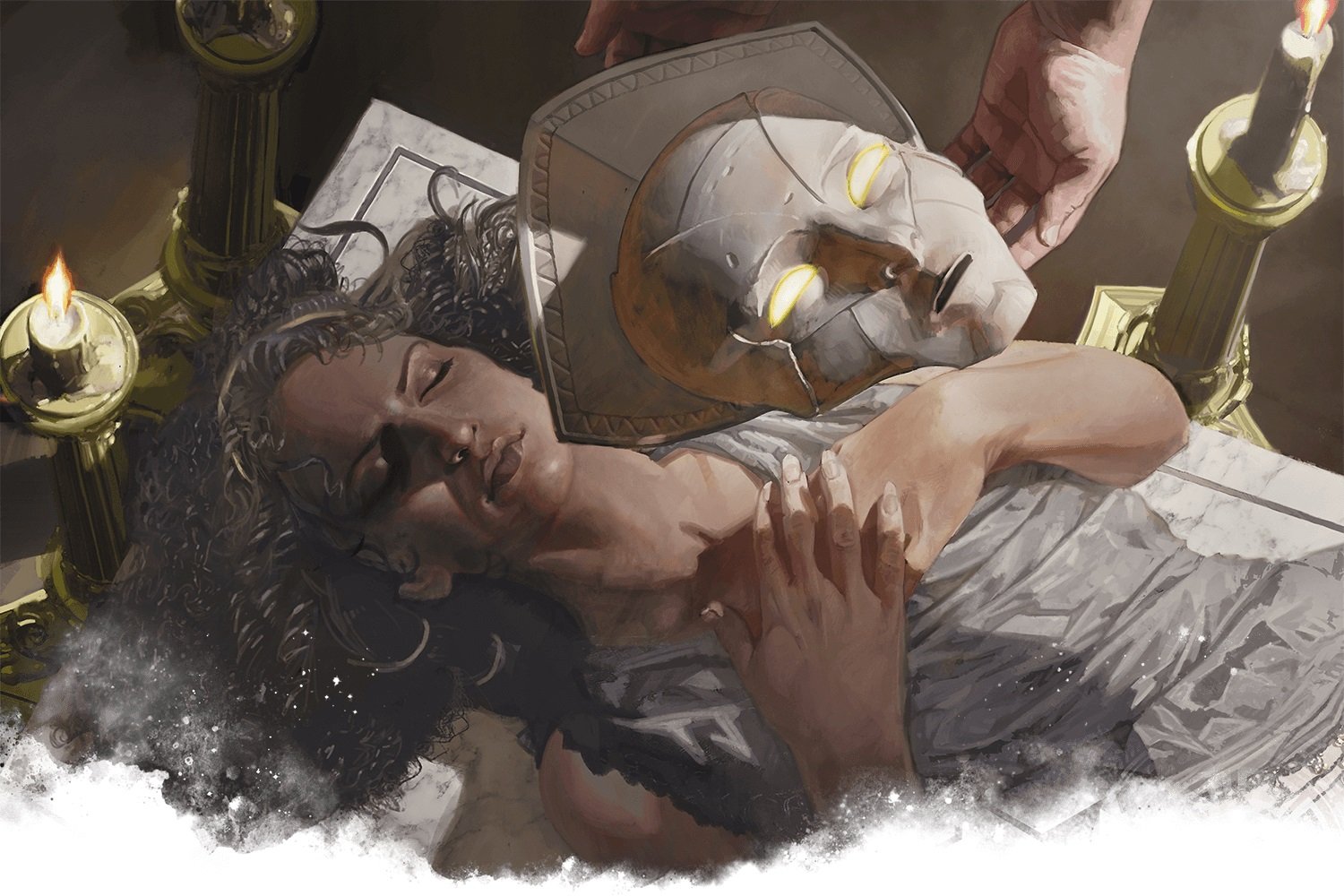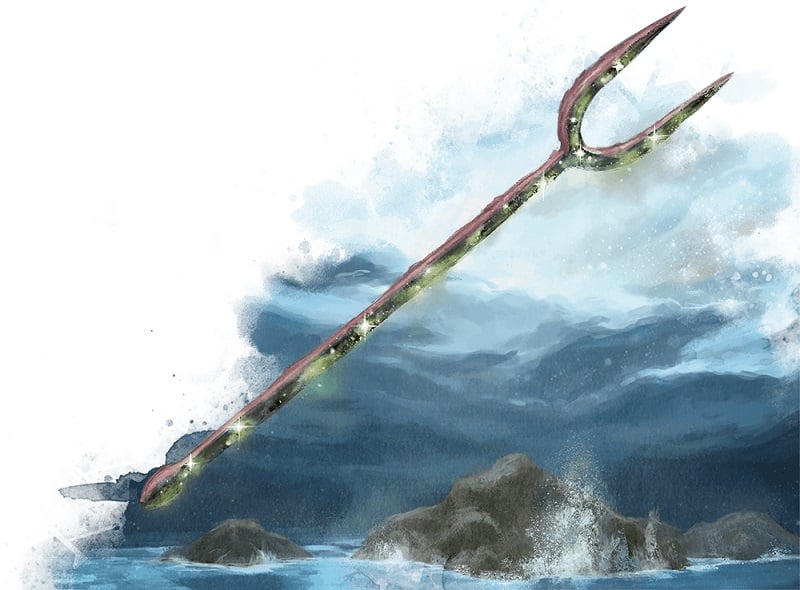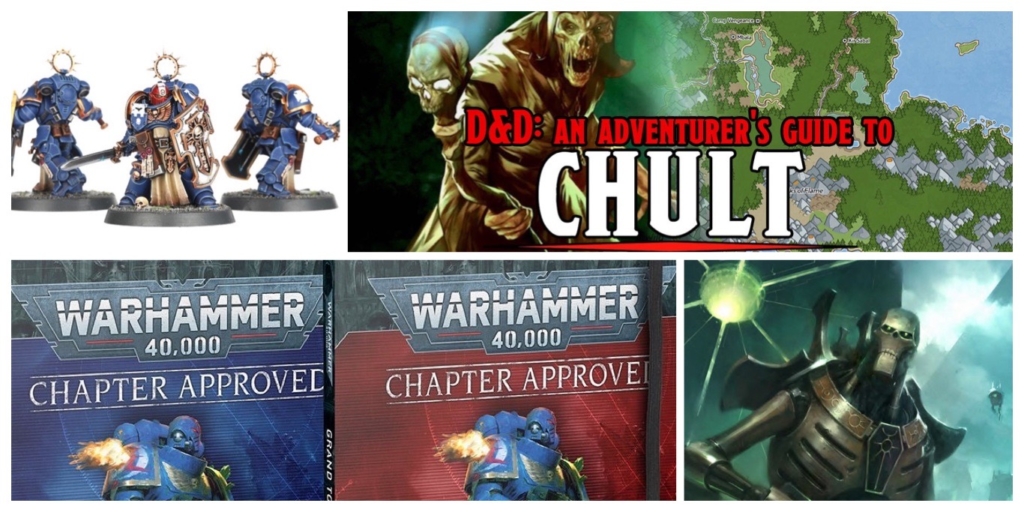D&D: How Theros Shows Us Where D&D Is Headed
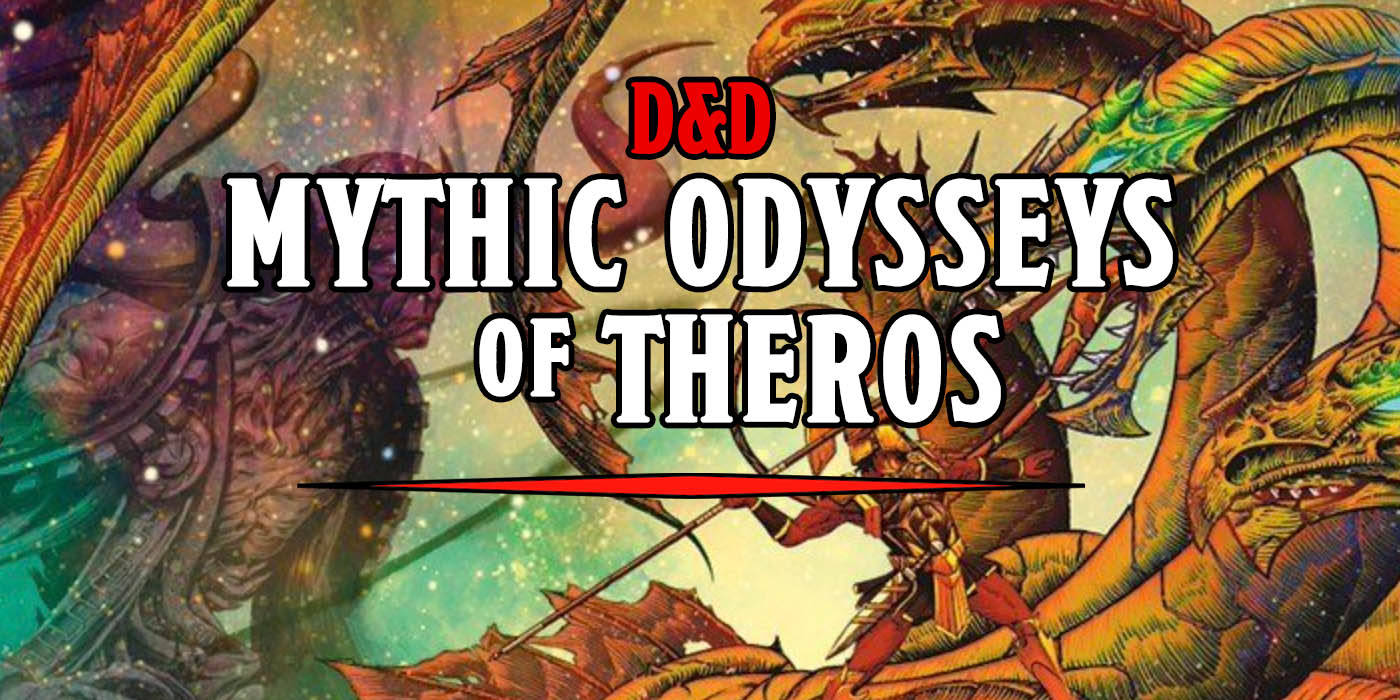

Mythic Odysseys of Theros is in stores now–you can get your hands on one of the physical books, which you’ll want because Theros will shape D&D for years to come.
The new D&D book is finally out in stores. It was made available digitally in the beginning of June, and you can check out our full review right here, but if you have been sitting on whether or not to pick this one up, here’s what the book adds to the games. The long and the short of it is, this is a handy guide for GMs looking to run higher powered games, for players looking to play more heroic heroes, and it has some of the most diverse environments packed into a small area about the size of actual real life Greece. It’s an indispensable aid that I worry might go overlooked amid all the Forgotten Realms stuff–the Magic: the Gathering related content tends to be a testing ground for more advanced takes on rules explored in the DMG, and Theros does this in spades.
The rules debuted in Theros will shape D&D for years to come. Everything from Mythic Monsters, which have already change the way that Rime of the Frostmaiden will work, to rules for handling more exploration-focused adventures, to piety rules that make following a god something any character can do, this book expands D&D. Let’s take a look at how.
Mythic Monsters
This is probably the biggest thing the book adds, and it changes so much about how fights in D&D flow. They open up the possibility for boss fights to feel more dynamic, making them more than just “drain the boss’ hit points until they go away.” Now bosses get new abilities, and might even take new methods to actually kill:
While many of Theros’s greatest myths arise from storied terrors—like the hydra Polukranos or the dreaded titans—the monsters in this section have a feature that sets them apart: mythic traits.
AdvertisementMythic traits transform battles into truly legendary confrontations, well suited to the climactic battles at the ends of adventures or whole campaigns. Mythic traits are optional; they don’t need to be used during combat with these monsters. If you so choose, you may simply ignore a monster’s mythic trait and mythic actions. If you wish to increase a battle’s stakes, though, using a monster’s mythic trait results in some mid-battle twist that changes the way the monster behaves, restores its resources, or provides it with new actions to use. As a result, the battle becomes deadlier and rages on for longer than most combat encounters. Each monster features an “As a Mythic Encounter” section that highlights its mythic trait, notes how using it changes the difficulty of the encounter and the rewards, and includes read-aloud text you can use mid-battle to signal a terrifying shift in the conflict.
As we’ve seen before, Mythic Monsters all have what amounts to two different “phases.” As the fight wears on, and the boss drops to 0 hit points, they undergo some kind of transformation that changes the way they fight. As an example, consider Tromokratis’ Mythic Transformation:
Once you knock Tromokratis 409 hp down, you have to take out its four hearts. It’s like a mini-game built in but Tromokratis is still trying to kill you the whole time.
Adventuring Rules
What about adventure though? Mythic Odysseys of Theros wants to take you places. Whether by sea:
Knowing the difference between port (left) and starboard (right), or a ship’s bow (front) and stern (rear) isn’t necessarily important to legendary heroes, particularly when brave crews sail along with them. Feel free to think of the ship your heroes travel upon less in the terms of a pirate story (full of commonplace duties and dangers) and more like a vessel in a space-faring, sci-fi adventure (where mundane operations often fade into the background). How much a story engages with course setting, provisioning, periods of inactivity, and other aspects of long ocean journeys is ultimately up to you and the players to decide, but consider cleaving to what the group thinks is fun rather than stretching for unnecessary accuracy (whatever that might mean for a world as magical as Theros).
Nautical Adventures could easily be written off as “travelling but the DM gets to use sea monsters and it sucks if you fall off the boat,” but Theros has more to it than that. It wants to capture the feel of bold sailors recounting mythic adventures, and it does it by turning to the stars. Seriously, the best advice it gives for sailing adventures is to get a little more Star Trek. Each island is its own episode and that’s where the key to exploration lies–it’s not just about rolling on a table to see what you find, but what you do in the place you find.
It also has some of the best “journey into the underworld” rules I’ve seen in anything D&D related. Seriously, worth it just for the adventuring advice alone.
Piety
But if that wasn’t enough, Theros also has rules for Piety. There’s a brief mention of it in the DMG, but, here the book lets the concept run wild and free. Where Guildmaster’s Guide to Ravnica blended the guilds that made up its world into the very fiber of its rules–taking the ‘renown system’ from the DMG and making it into something that’s not just functional but fun to use–Theros does similar for gods. Deities are at the heart of this world, and even if you’re playing in your own setting, if you’re looking for ways to bring the gods in besides the occasional “you get a quest” or answering a Cleric’s question–and more importantly WITHOUT them dominating the spotlight–then you’ll want to check out Mythic Odysseys of Theros. Seriously, Theros has the best advice for playing in adventures where deities intervene without making it feel like they’re running roughshod over everything. It talks about how a god might take an interest in a fighter, how they might influence a quest. It’s a really cool paradigm for the world:
Don’t eliminate character choice. The gods can tell characters to do things, and even threaten to punish them if they don’t do things, but the gods can’t control mortal actions.
Don’t eliminate risk and danger. The intervention of a god should never guarantee success or victory, nor should a god’s interference portend immediate defeat. Gods can act to change the balance of an encounter or offer an avenue of escape, but they count on their champions to be heroes and act accordingly.
Mythic Odysseys offers DMs a number of ways gods might communicate, outside of just the usual spells. If you’re looking to make your world feel mythic, this book does fantastic. It is all about the feeling of playing in a world that’s more magical than standard D&D, which is saying something because there are literal wizards in base D&D. But here you can get signs from the gods (thanks to some helpful lists of omens), or receive a quest directly from a divinity.
Epic Artifacts
Theros wants you to be heroic. Here’s a look at one of the new artifacts:
Dekella is the bident of the sea! It functions as a +3 trident, so how’s that for ludonarrative dissonance, and it deals 2d10 extra cold damage. At Piety 10+ you gain a 60 ft. swim speed, at 25 and 50, like Akmon before it, you get extra beneficial properties.
Beyond that, you can also command the waves and its creatures, take an action to change the condition of the sea within 1 mile of you, creating or dispelling storms as you see fit. You can also cast dominate monster on anyone that has an innate swimming speed, or true polymorph something into a creature with an innate swimming speed.
Whatever your pleasure, Theros wants you to be heroic. Seriously, the way these rules play out will likely shape whatever D&D content in the future holds. While things like Piety or the specific rules for journeying to the underworld might not come up directly, you can see the guiding influence that it’s already starting to wield. After developing this book, the team moved on to coming up with new ways to feel the themes of a world–Rime of the Frostmaiden promises to make the setting of Icewind Dale matter, and in Theros, it feels like one of the first places where they nailed that.
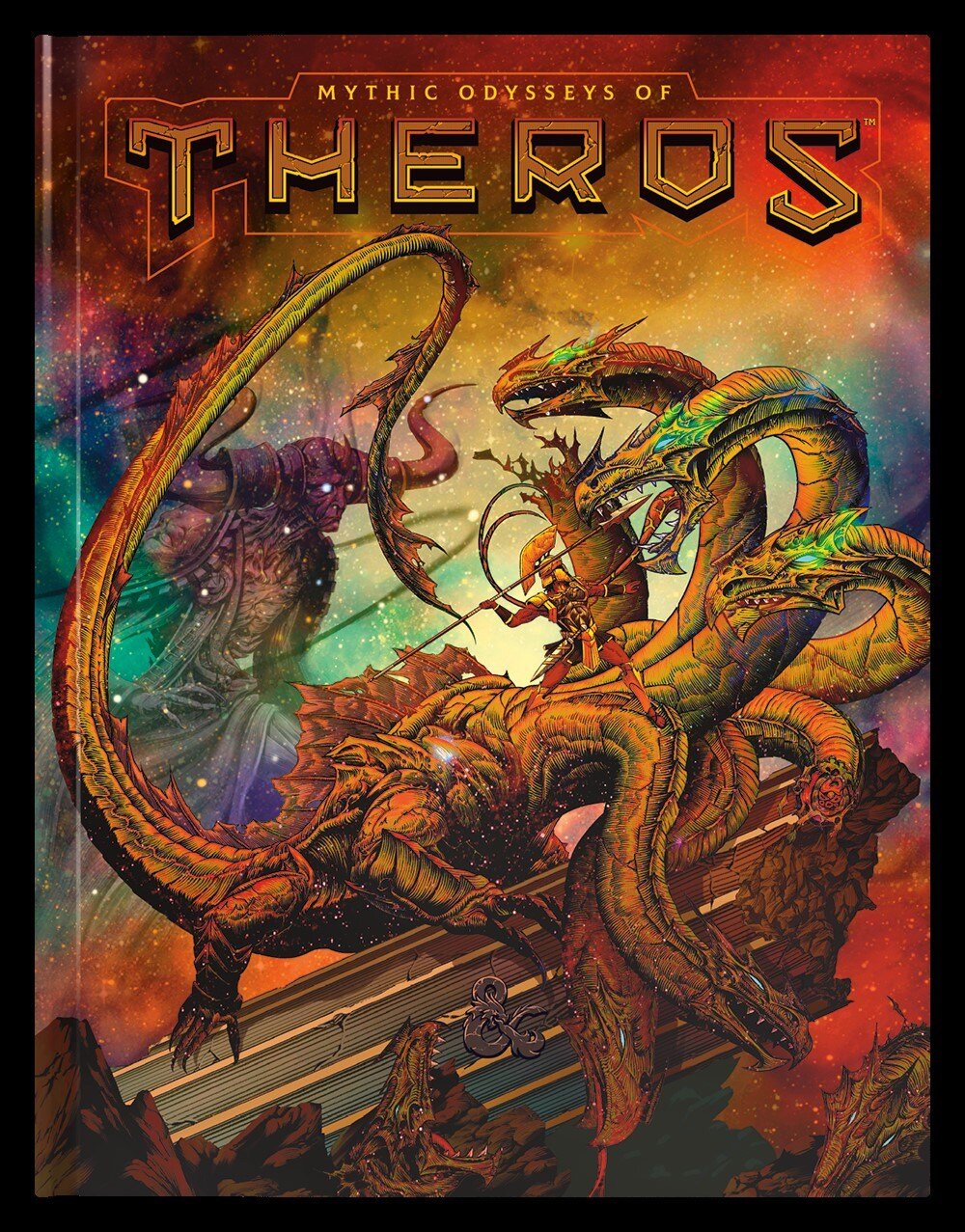 Here is the alternative cover version. Beautiful.
Here is the alternative cover version. Beautiful.
Happy Adventuring!

